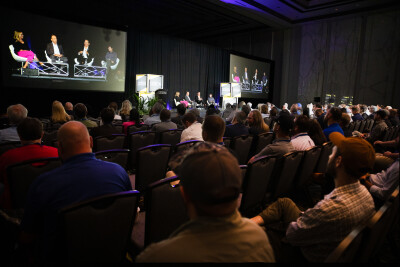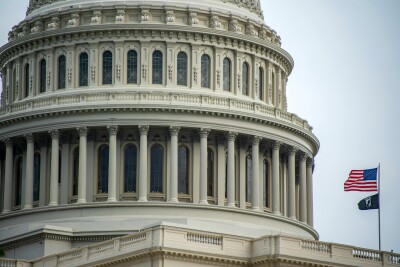After President Biden signed the FAA reauthorization Act of 2024 on May 16 of this year, the FAA was given four months to publish a Notice of Proposed Rulemaking (NPRM) for its regulation of uncrewed flights beyond visual line of sight (BVLOS) of the operator in what is known unofficially as Part 108.
This 120-day period will expire in just two weeks (September 16), and therefore everyone at Commercial UAV Expo this year was anxious to hear from the FAA directly how things are progressing with said NPRM.
Three sessions took place at the event that were entirely focused on policy updates.
Interview with the FAA's Tim Arel, Chief Operating Officer of the FAA’s Air Traffic Organization (ATO)
ATO is responsible for ensuring safe, efficient, and secure air traffic services for approximately 50,000 aircraft operating every day over nearly 30 million square miles across the National Airspace System (NAS). Lisa Ellman, Executive Director of the Commercial Drone Alliance, conducted the interview.
“What we are trying to do is to turn all these segregated conversations around an industry into a coherent dialogue that brings everyone together,” Arel said.
Given the organization’s responsibility over the operationalization of airspace modernization initiatives and the integration of unmanned aircraft systems and commercial space operations into the NAS, Arel is a key component of what the FAA has in store in terms of what is called NEXTGEN.
“NEXTGEN is an ambitious plan, which has been thrusted into the limelight by the 2024 FAA Reauthorization Act by the need to bring all these new technologies into the fold of one unified aviation community,” Arel stated.
An FAA plan, known as Radar Data Pilot Program, aims at opening aviation radar data to the public in an effort to contribute to the safe integration of uncrewed platforms.
“By opening this data to the different entities engaged in the creation of platforms to increase safety, we enable the operational effectiveness of valuable information that is funded by taxpayers and that will certainly increase the levels of safety in the NAS,” said Arel. “Our challenge is to make sure that this data does not fall into the wrong hands and that too much detail about certain aircraft and certain flights is used for the wrong purposes.”
Drone Policy Update
Tim Arel, Jeffrey Vincent, Executive Director of the Federal Aviation Administration’s Unmanned Aircraft Systems (UAS) Integration Office, Brandon Roberts, Executive Director of the Federal Aviation Administration’s Office of Rulemaking of the FAA and Bailey Edwards of Wing participated in a panel moderated by Lisa Ellman which gave the audience a comprehensive brief about the current state of the UAS regulation.
“We have spent most of the year focused on the development of the NPRM for Part 108,” Vincent said. “There are lots of automations systems that need to work together to make this integration feasible and we have a panel of experts working full time in the wording of the proposal, so we can publish and receive comments from the public.”
“Hundreds if not thousands of waivers and exceptions have been issued in an effort to provide a clearer picture of how the system looks when we deploy at an operational scale,” Roberts asserted. “We are hopeful the NPRM will be published before the end of the year, and we hope we receive many, many comments. I can assure you that we read them all and sometimes they help shape policy.”
Part 108 Update
The third session of the day focused on aviation policy wrapped up a triad of briefings in which issues such as operational safety, certification, and future regulations were addressed extensively.
Brandon Roberts, Derek Hufty, Rachel Carlstrom, Joe Morra, and Jarret Larrow of the FAA discussed the challenges and opportunities that the new Part 108 regulation will bring to the industry.
“Current certification process for traditional aircraft is not something that would be feasible for small uncrewed aircraft,” Brandon said. “We are looking at ways to streamline and adapt the aircraft certification guidelines to better suit drones without compromising safety and reliability.”
The need for strong collaboration between the FAA and industry was highlighted by all panelists and it was particularly stressed by Mr. Roberts who said, “We need to see what happens when things go wrong, but also what happens when things go right.”
In short, these three sessions gave attendees to Commercial UAV Expo 2024 a clear idea of what is coming down the pipe from the FAA with emphasis on a NPRM for Part 108 by the end of the year and the beginning of a long process in which the federal agency expect the drone industry to comment and help shape the future of BVLOS operations in the NAS.















Comments